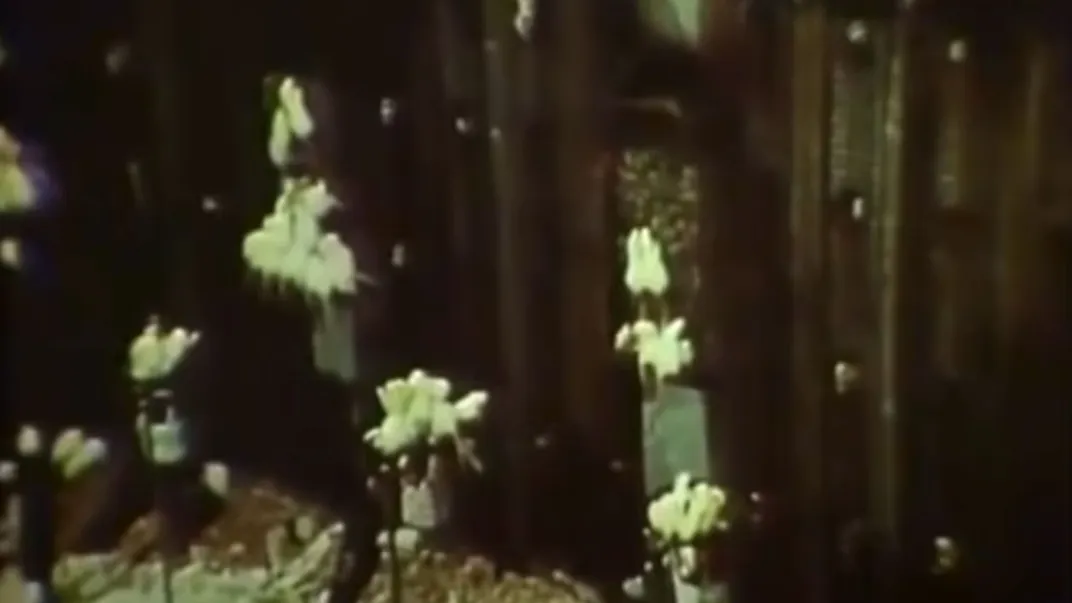This Old Experiment With Mice Led to Bleak Predictions for Humanity’s Future
From the 1950s to the 1970s, researcher John Calhoun gave rodents unlimited food and studied their behavior in overcrowded conditions
/https://tf-cmsv2-smithsonianmag-media.s3.amazonaws.com/filer/7c/36/7c36a5fc-01a8-4877-aeb4-ad87704efcf2/calhounj.jpg)
What does utopia look like for mice and rats? According to a researcher who did most of his work in the 1950s through 1970s, it might include limitless food, multiple levels and secluded little condos. These were all part of John Calhoun’s experiments to study the effects of population density on behavior. But what looked like rodent paradises at first quickly spiraled into out-of-control overcrowding, eventual population collapse and seemingly sinister behavior patterns.
In other words, the mice were not nice.
Working with rats between 1958 and 1962, and with mice from 1968 to 1972, Calhoun set up experimental rodent enclosures at the National Institute of Mental Health’s Laboratory of Psychology. He hoped to learn more about how humans might behave in a crowded future. His first 24 attempts ended early due to constraints on laboratory space. But his 25th attempt at a utopian habitat, which began in 1968, would become a landmark psychological study. According to Gizmodo’s Esther Inglis-Arkell, Calhoun’s “Universe 25” started when the researcher dropped four female and four male mice into the enclosure.
By the 560th day, the population peaked with over 2,200 individuals scurrying around, waiting for food and sometimes erupting into open brawls. These mice spent most of their time in the presence of hundreds of other mice. When they became adults, those mice that managed to produce offspring were so stressed out that parenting became an afterthought.
“Few females carried pregnancies to term, and the ones that did seemed to simply forget about their babies,” wrote Inglis-Arkell in 2015. “They’d move half their litter away from danger and forget the rest. Sometimes they’d drop and abandon a baby while they were carrying it.”
A select group of mice, which Calhoun called “the beautiful ones,” secluded themselves in protected places with a guard posted at the entry. They didn’t seek out mates or fight with other mice, wrote Will Wiles in Cabinet magazine in 2011, “they just ate, slept and groomed, wrapped in narcissistic introspection.”
Eventually, several factors combined to doom the experiment. The beautiful ones’ chaste behavior lowered the birth rate. Meanwhile, out in the overcrowded common areas, the few remaining parents’ neglect increased infant mortality. These factors sent the mice society over a demographic cliff. Just over a month after population peaked, around day 600, according to Distillations magazine’s Sam Kean, no baby mice were surviving more than a few days. The society plummeted toward extinction as the remaining adult mice were just “hiding like hermits or grooming all day” before dying out, writes Kean.
Calhoun launched his experiments with the intent of translating his findings to human behavior. Ideas of a dangerously overcrowded human population were popularized by Thomas Malthus at the end of the 18th century with his book An Essay on the Principle of Population. Malthus theorized that populations would expand far faster than food production, leading to poverty and societal decline. Then, in 1968, the same year Calhoun set his ill-fated utopia in motion, Stanford University entomologist Paul Ehrlich published The Population Bomb. The book sparked widespread fears of an overcrowded and dystopic imminent future, beginning with the line, “The battle to feed all of humanity is over.”
Ehrlich suggested that the impending collapse mirrored the conditions Calhoun would find in his experiments. The cause, wrote Charles C. Mann for Smithsonian magazine in 2018, would be “too many people, packed into too-tight spaces, taking too much from the earth. Unless humanity cut down its numbers—soon—all of us would face ‘mass starvation’ on ‘a dying planet.’”
Calhoun’s experiments were interpreted at the time as evidence of what could happen in an overpopulated world. The unusual behaviors he observed—such as open violence, a lack of interest in sex and poor pup-rearing—he dubbed “behavioral sinks.”
After Calhoun wrote about his findings in a 1962 issue of Scientific American, that term caught on in popular culture, according to a paper published in the Journal of Social History. The work tapped into the era’s feeling of dread that crowded urban areas heralded the risk of moral decay.
Events like the murder of Kitty Genovese in 1964—in which false reports claimed 37 witnesses stood by and did nothing as Genovese was stabbed repeatedly—only served to intensify the worry. Despite the misinformation, media discussed the case widely as emblematic of rampant urban moral decay. A host of science fiction works—films like Soylent Green, comics like 2000 AD—played on Calhoun’s ideas and those of his contemporaries. For example, Soylent Green’s vision of a dystopic future was set in a world maligned by pollution, poverty and overpopulation.
Now, interpretations of Calhoun’s work have changed. Inglis-Arkell explains that the main problem of the habitats he created wasn’t really a lack of space. Rather, it seems likely that Universe 25’s design enabled aggressive mice to stake out prime territory and guard the pens for a limited number of mice, leading to overcrowding in the rest of the world.
However we interpret Calhoun’s experiments, though, we can take comfort in the fact that humans are not rodents. Follow-up experiments by other researchers, which looked at human subjects, found that crowded conditions didn’t necessarily lead to negative outcomes like stress, aggression or discomfort.
“Rats may suffer from crowding,” medical historian Edmund Ramsden told the NIH Record’s Carla Garnett in 2008, “human beings can cope.”

